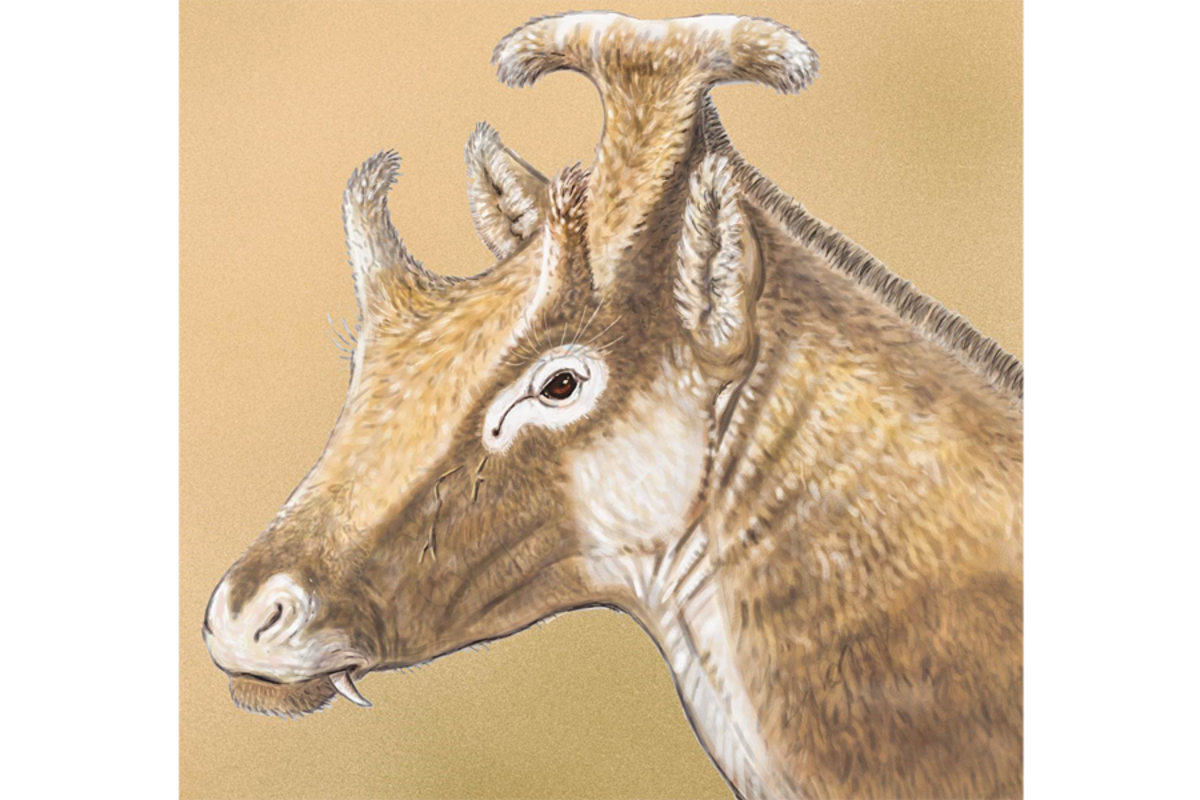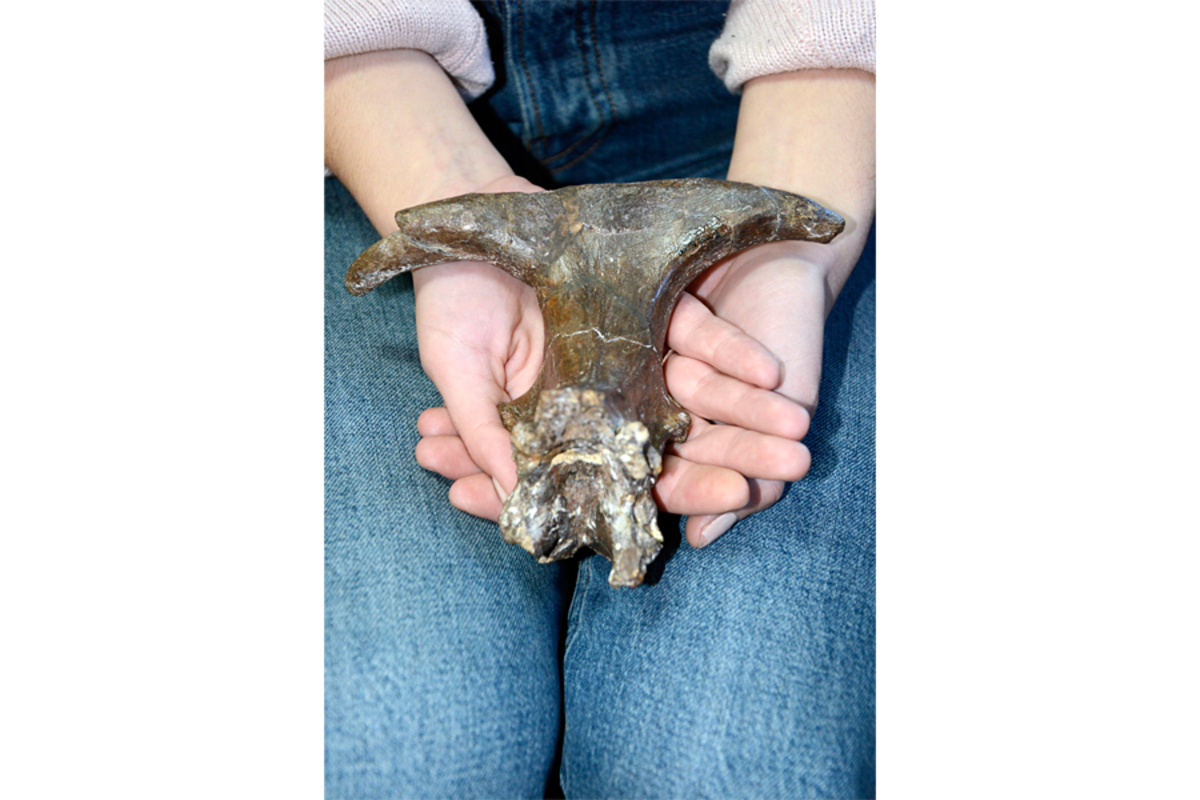Is this strange, three-horned extinct creature a giraffe cousin?
Loading...
Palaeomerycidae, a family of strange, horned extinct creatures that roamed Eurasia in the middle Miocene, have long been thought to be ancestors of deer.
But the odd ancient animals also display similar features to another ungulate – the giraffe.��
Both deer and giraffes are ruminants, herbivores with multiple stomachs for complex digestion, and both animals have horns.��
But Palaeomerycid’s horns, say scientists, among other characteristics, show that the ancient animal is more closely related to the giraffe, not the deer.
Fossils found in Spain of Xenokeryx amidalae, a Palaeomerycid species that lived in the middle Miocene epoch, some 16 to 11 million years ago, helped researchers classify the ancient ruminant as a in a new paper published Wednesday in the journal PLOS ONE.��
Xenokeryx has three horns, two small ones in the front of its head and a large T-shaped horn protruding from the back. The scientists found that the front horns are ossicones, the same structure that gives giraffes their horns.��
An ossicone is a detachable unit. In a young animal, it grows separately and then fuses to the skull in adulthood.��
“The problem with Palaeomerycids is that really nobody knew where they belonged in the ruminant evolutionary tree,” study author Israel M. Sánchez tells ���Ǵ��� in an interview.��
Scientists had previously connected Palaeomerycids to another group of ruminants that appear similar externally and whose teeth have features like those of Palaeomerycids. These other ruminants, the Dromomerycids, are thought to be distant deer relatives.
“The majority of researchers thought that Palaeomerycids in Eurasia and the Dromomerycids in North America were very closely related groups,” Dr. Sánchez says. So Sánchez and his colleagues turned to Xenokeryx to test that hypothesis.
“We have discovered that Palaeomerycids in Europe were not the cousins of the North American Dromomerycids,” he says.
The problem before was that conclusive fossil evidence for ossicones in Palaeomerycids had not yet been found.
But now, “They found evidence, finally, that separates the North American from the Eurasian animals into two different groups,” Nikos Solounias, a mammalian anatomy and evolution expert who has focused his research on giraffes and is not connected with this study, tells the Monitor in an interview.��“They look very similar,” he says. But, “that’s called convergent evolution.”
In convergent evolution, different animals independently evolve similar traits as a process of adapting to similar environments.��
Xenokeryx was classified as a member of the clade Giraffomorpha based on its physical characteristics.��
– the means of classifying biological organisms based on shared derived characteristics – "is more or less like the stock market,” says Dr. Solounias. “It’s what you define it to be. You look at characters and match animals with characters.”
“Cladistics is looking at similarities, so it’s not surprising that they’re finding those relatives to the giraffe,” Solounias says. In fact, he adds, other researchers have before.��
This study is “reassuring, yes, they’re relatives to the giraffes,” says the giraffe expert.��
Solounias estimates that the common ancestor of Palaeomerycid and the giraffe lived some 19 million years ago.��
“The giraffes need to have another group next to them,” evolutionarily, Solounias says. “They cannot be by themselves, hanging.”
Solounias hopes that identifying that lineage could help answer questions about the giraffe’s origins.
The long-necked, long-legged animal has few close living relatives. They are one of “a very, very diverse group full of strange animals,” Sánchez says. Research into the giraffe’s lineage could help scientists and conservationists better understand the animals.
“It’s our responsibility that the giraffe doesn’t go on to be studied [only] by paleontologists, doesn’t go extinct,” Sánchez says.






